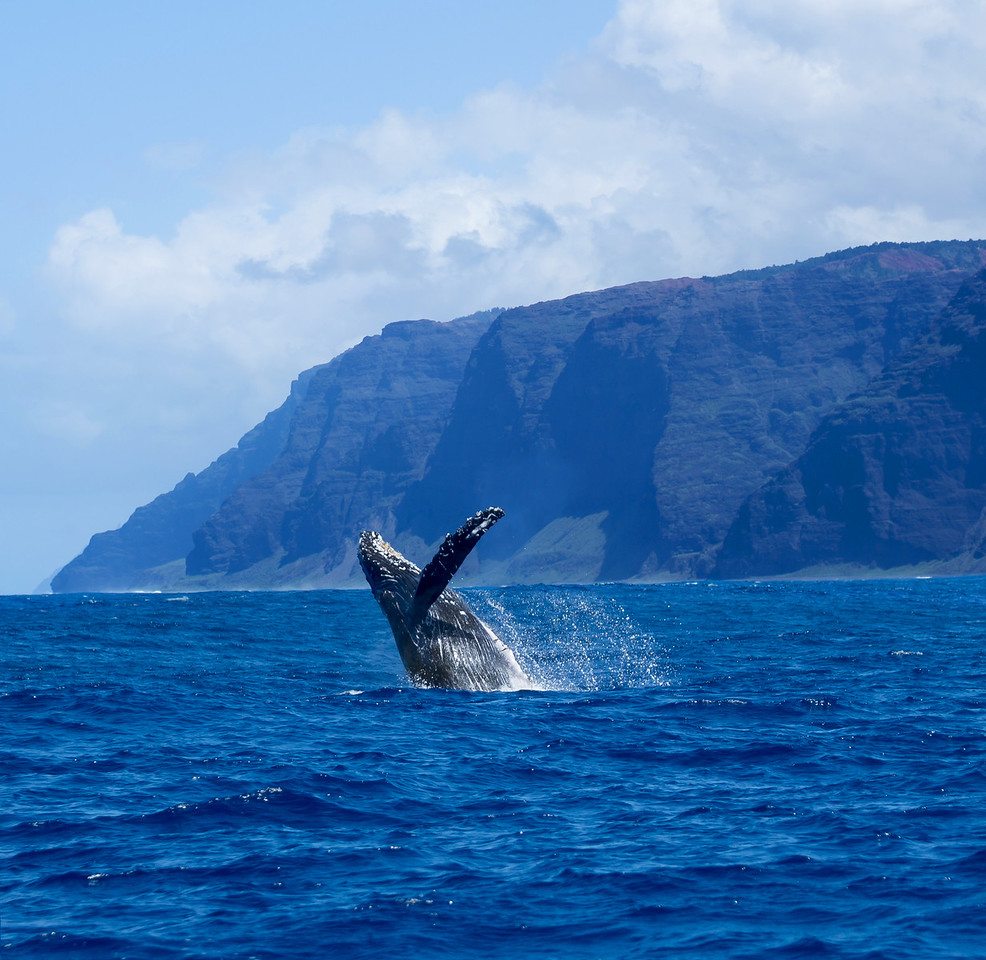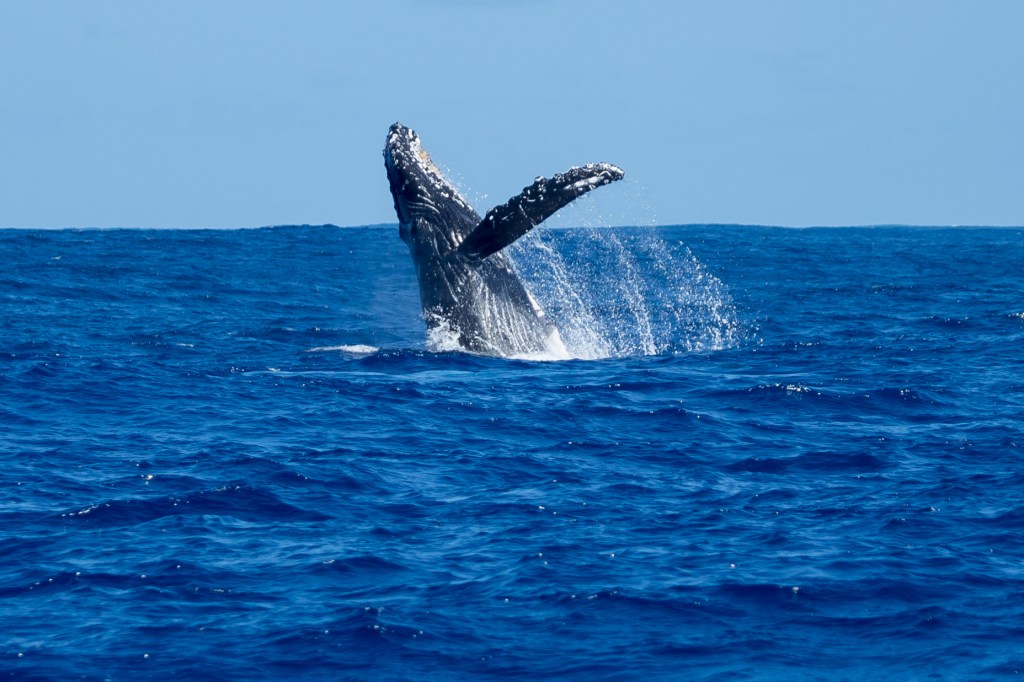Whale Watching Season
The yearly return of humpback whales to Hawaiʻi is a much anticipated splash into a new season!

Humpback whales or koholā return to the warm waters of Hawaiʻi each year between October and May, with peak season from December to April. The breaching playful whales join us daily on tours enjoying their winter of mating and birthing their young in the Pacific.
Every year, our seasonal neighbors head south for the winter from the Gulf of Alaska to Hawaiʻi. After the season, they migrate back to their summer feeding grounds, only to return the following winter to mate, nurse and birth their young. Amazingly, thousands of whales travel up to 5,000 miles each way between their breeding grounds here, and more food-plentiful waters in the arctic.
Whale hello there!
If you’ve ever seen a humpback whale breach or flap its fins, it looks like a clear and playful “hello,” which isn’t entirely off. The whales do use acrobatics as a way of communicating. The “wave” or slapping motion creates sound to communicate with other whales, and the breaching is believed to send messages to other whales that are further away, or attract a mate. So yes, they are showing off. Sometimes their actions are to announce a location for feeding, and other times it is simply to communicate where other members of the pod are. Either way, the social display is so fun to watch, and best seen on the water from a safe distance.

The legend of koholā
The spiritual connection to all living things, land and sea, is a powerful force in Hawaiian culture. Whales have taken on the representation of different gods, including Lono, who is honored during Makahiki season when the koholā return to the islands. The line between the physical and spiritual world is often blurred to allow native Hawaiians a connection to the ‘āina, ocean, or animal kingdom for guidance. Koholā is actually a multi-use word which refers to humpback whales as well as the reef. Some say the connection of the waves splashing off the reef are akin to the spray from a whale’s blow hole, connecting the two.
A conservation success story
Humpback whales are a federally endorsed endangered species due to many factors that affect other sea mammals including fishing operations, marine debris entanglement, and a slow loss of habitat. However, humpback whales are also protected under the Marine Mammal Protection Act. Thanks to global conservation efforts including the Endangered Species Act, the current population of humpback whales has grown from 10,000 to 80,000 in recent years! By identifying a safe distance for sea vessels (such as our own) to operate away from these gentle giants, we have been able to admire our whale friends without disturbing their way of life.
Fisheries must also abide by a set of protective laws to lessen the threat of danger to the whales, and the ban on whaling did wonders for protecting the species as a whole. Because whales rely on noise to communicate (songs and/or breaching and flapping,) decreasing the drilling and ocean vessel traffic has helped keep the whales on course when migrating, and allowed them to communicate effectively with their pods. We are proud to exist harmoniously with the koholā, while offering our guests a peek into their way of life.
If you’d like to learn more about saving the whales, visit savethewhales.org. We hope to see you on tour this winter!
